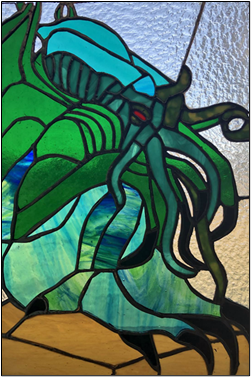Loading...
Event Website
Start Date
2-5-2022 10:00 AM
Description
At the pinnacle of Lewis’ That Hideous Strength (2003) is the reanimation of the decapitated head of Francois Alcasan. The sheer biological persistence that is afforded to it by the biosynthetic technics of medicinal artifice, allows the head to be possessed by “macrobes”— maleficent spiritual beings imprisoned within the circle of the moon. The goal of this reanimation project is purportedly “the conquest of death […] to bring out of that cocoon of organic life […] the man who will not die, the artificial man, free from Nature. Nature is the ladder we have climbed up by, now we kick her away” (173–174). And yet, by narrating the gradual disposal of biological life (e.g., a body, salivatory mucosae, brain function) and then ultimately even the disposal of technical life (e.g., tubes, respirators, etc.), Lewis imagines what Michael Burdett has described as “the poverty of the posthuman instrumental body that is displaced and informational rather than material, integrous and whole” (2021, 13). All of the seemingly beneficent ambitions of the project belie what Jeffery Bishop has identified as a power ontology “that understands life as mere materiality, dead material either building itself towards its own telos in the post-human or collapsing into the abyss of eternal return” (2019, 690). The monstrosity Lewis imagines is the horror resultant from a social imaginary that has exchanged formal and final causes for material and efficient causes; in which life is procured at all costs—even at the cost of life itself.
Creative Commons License

This work is licensed under a Creative Commons Attribution-NonCommercial-No Derivative Works 4.0 International License.
Included in
Children's and Young Adult Literature Commons, Comparative Literature Commons, Digital Humanities Commons, European Languages and Societies Commons, Literature in English, Anglophone outside British Isles and North America Commons, Literature in English, British Isles Commons, Literature in English, North America, Ethnic and Cultural Minority Commons, Medieval Studies Commons, Modern Languages Commons, Modern Literature Commons, Other English Language and Literature Commons
Adoring the Head of Alcasan: Posthuman Horror and Anticipatory Corpse in Lewis’s That Hideous Strength
At the pinnacle of Lewis’ That Hideous Strength (2003) is the reanimation of the decapitated head of Francois Alcasan. The sheer biological persistence that is afforded to it by the biosynthetic technics of medicinal artifice, allows the head to be possessed by “macrobes”— maleficent spiritual beings imprisoned within the circle of the moon. The goal of this reanimation project is purportedly “the conquest of death […] to bring out of that cocoon of organic life […] the man who will not die, the artificial man, free from Nature. Nature is the ladder we have climbed up by, now we kick her away” (173–174). And yet, by narrating the gradual disposal of biological life (e.g., a body, salivatory mucosae, brain function) and then ultimately even the disposal of technical life (e.g., tubes, respirators, etc.), Lewis imagines what Michael Burdett has described as “the poverty of the posthuman instrumental body that is displaced and informational rather than material, integrous and whole” (2021, 13). All of the seemingly beneficent ambitions of the project belie what Jeffery Bishop has identified as a power ontology “that understands life as mere materiality, dead material either building itself towards its own telos in the post-human or collapsing into the abyss of eternal return” (2019, 690). The monstrosity Lewis imagines is the horror resultant from a social imaginary that has exchanged formal and final causes for material and efficient causes; in which life is procured at all costs—even at the cost of life itself.



Comments
Host: Jolie Hicks
Tech Mod: Jessica Dickinson Goodman
Mark Brians is the Rector at All Saints in downtown Honolulu. His essays have appeared online at Anglican Compass and the Theopolis Institute, and he has reviewed books for The Journal of Global Christianity, The Journal for Christianity and Literature, and Themelios. He is a contributor to the forthcoming volume on Theology and Tolkien edited by Douglas Estes. He lives in Liliha with his wife and four children.